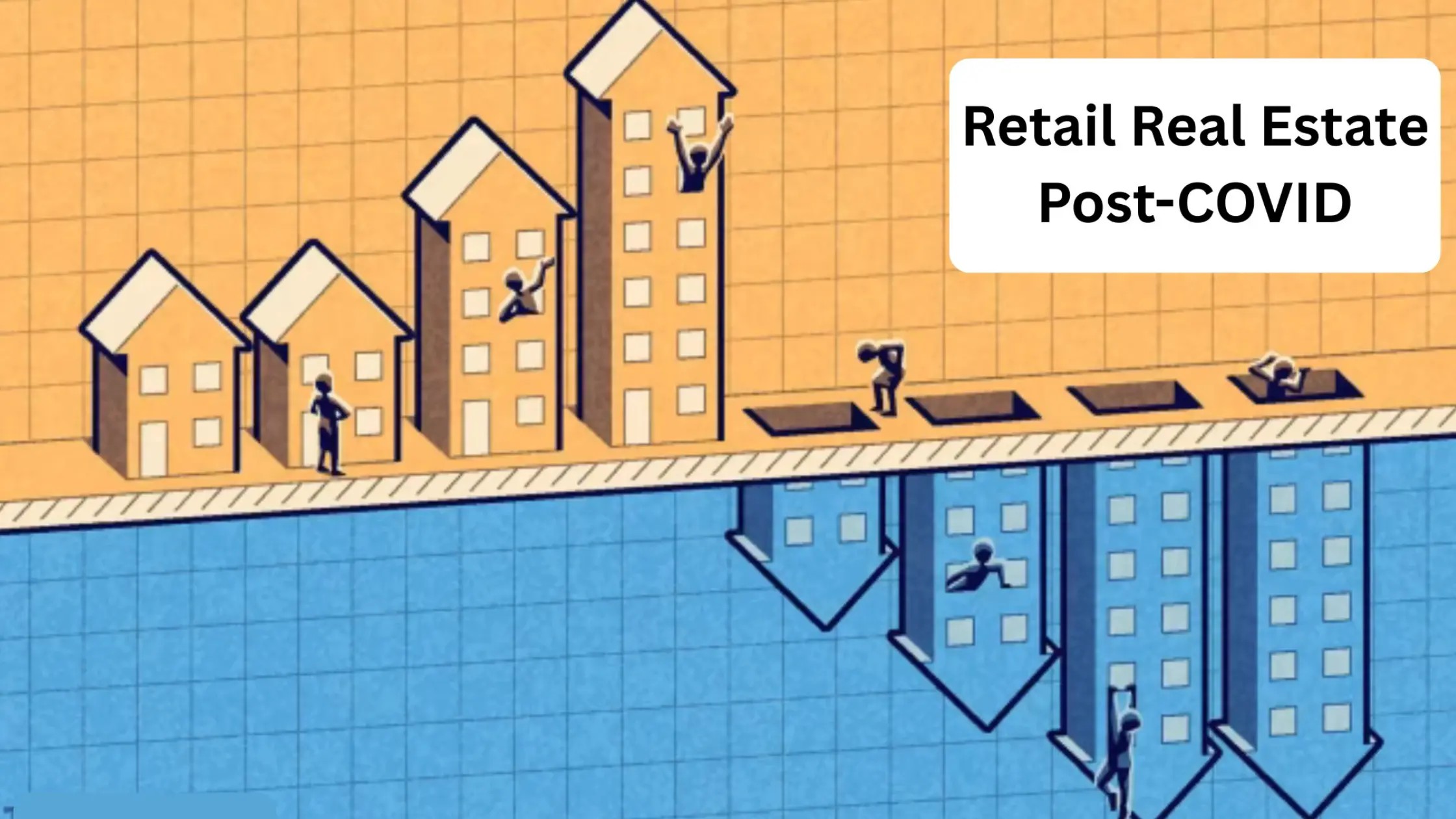Retail Real Estate Post-COVID
Read latest blogs and articles from Housystan

The Information mentioned here was last updated on:
4/12/2025Retail Real Estate Post-COVID:
When the world came to a halt during the COVID-19 pandemic, retail real estate was among the hardest-hit sectors. Shopping centers went dark, small businesses struggled to stay afloat, and consumer behavior shifted in ways no one could have predicted. But years after the height of the pandemic, the landscape of retail real estate is showing signs of revival albeit in a new, redefined form.
The post-COVID retail environment has become a fascinating mix of resilience, reinvention, and rediscovery. The traditional model of physical stores is evolving rapidly, shaped by changing consumer habits, the rise of e-commerce, and new demands for experience-driven retail spaces.
- Verified Tenants/Buyers
- Unlimited Property Listing
- Zero subscription/charges fee
Before COVID-19, retail real estate was already under pressure from the growing popularity of online shopping. The pandemic accelerated that shift dramatically. Lockdowns forced consumers to rely on e-commerce for almost everything, from groceries to furniture. For many months, malls and retail complexes stood empty, and store closures became routine headlines.
Yet, as restrictions eased, something unexpected happened: people wanted to return to physical shopping. However, they no longer viewed it as a simple errand it became a social experience. Today’s shoppers are not just looking to buy; they’re looking for engagement, convenience, and a sense of community.
This change has encouraged landlords and retailers alike to rethink their strategies. The focus is now on creating multi-use spaces that combine shopping, dining, entertainment, and even wellness. Malls are being reimagined as lifestyle centers, where visitors can spend time rather than simply make purchases.
The biggest takeaway from the pandemic is that consumers now prefer a hybrid shopping experience. They enjoy the speed and convenience of online purchases but still crave the tactile experience of visiting a store. This blend of digital and physical retail often called “phygital” is reshaping how retail real estate operates.
Stores are increasingly acting as both showrooms and fulfillment hubs. Brands use them to let customers see, touch, and try products while offering fast local delivery or pickup options. For example, many clothing retailers now let customers buy online and return items in-store, a trend that has become a major driver of foot traffic.
Retail spaces are also being designed with flexibility in mind. Pop-up shops, temporary showrooms, and event-based spaces have become popular among retailers testing new markets or launching seasonal products. These short-term leases benefit both landlords and tenants landlords keep their properties active, and retailers gain visibility without long-term commitments.
Technology has become a central feature of post-pandemic retail real estate. From smart fitting rooms and contactless payments to augmented reality shopping experiences, innovation is helping bridge the gap between digital convenience and physical presence.
Property managers are investing in digital infrastructure that enhances both the shopping experience and building efficiency. Smart parking systems, data-driven foot traffic analytics, and app-based navigation tools are now common in modern malls. These tools not only make visits smoother but also help retailers understand customer behavior better.
One of the most notable trends in retail real estate after COVID-19 is the transformation of the tenant mix. Gone are the days when malls were dominated by fashion stores and large department chains. Today, the mix is more diverse, incorporating entertainment, fitness, wellness, and even healthcare providers.
In some cases, landlords are welcoming unconventional tenants like co-working spaces or medical clinics. These additions provide steady traffic and long-term stability, especially as traditional retail tenants reduce their physical footprints. The blending of commercial, leisure, and community-oriented uses has made retail centers more dynamic and resilient.
Sustainability Takes Center Stage
Sustainability has also become a defining factor in the post-pandemic retail real estate market. Both consumers and investors are increasingly drawn to environmentally responsible projects. Developers are focusing on green building materials, energy efficiency, and designs that encourage natural light and open-air circulation.
Outdoor shopping centers have gained renewed interest for their health-conscious appeal and open layouts. Many property owners are integrating green spaces, solar panels, and water-saving technologies into their designs. Sustainability is no longer just a buzzword; it’s a business imperative that aligns with modern consumer values.
Urban vs. Suburban Retail Revival
The pandemic triggered population shifts that reshaped retail geography. As remote work took off, many people moved from dense urban areas to suburban or smaller cities, sparking new opportunities for local retail growth. Suburban shopping centers and mixed-use developments are now thriving, driven by steady residential demand.
At the same time, urban retail is slowly recovering, powered by tourism, office reopenings, and entertainment venues. However, city-based retail now looks different smaller store formats, curbside pickup options, and neighborhood-centric designs are replacing large-scale flagships.
This balance between urban and suburban growth has made the retail landscape more distributed, reducing dependence on a single location type. Developers are adjusting their portfolios accordingly, with a focus on flexibility and adaptability.
Investment and the Road Ahead
From an investment perspective, retail real estate has moved past its pandemic lows. While not all sectors have rebounded equally, grocery-anchored centers, discount retailers, and community-based shopping complexes are performing strongly. Investors are drawn to these assets for their stable income and essential-service appeal.
Meanwhile, high-end retail and luxury malls are benefiting from pent-up consumer demand and the return of international tourists. The key for investors is to focus on properties that can evolve with changing trends spaces that balance digital integration with meaningful, real-world experiences.
The retail real estate sector’s post-COVID journey is a story of adaptation and renewal. What was once a question of survival has turned into an era of reinvention. The lessons learned during the pandemic are shaping a more flexible, experiential, and sustainable retail future one that recognizes that shopping is not just about what people buy, but how and where they choose to spend their time.